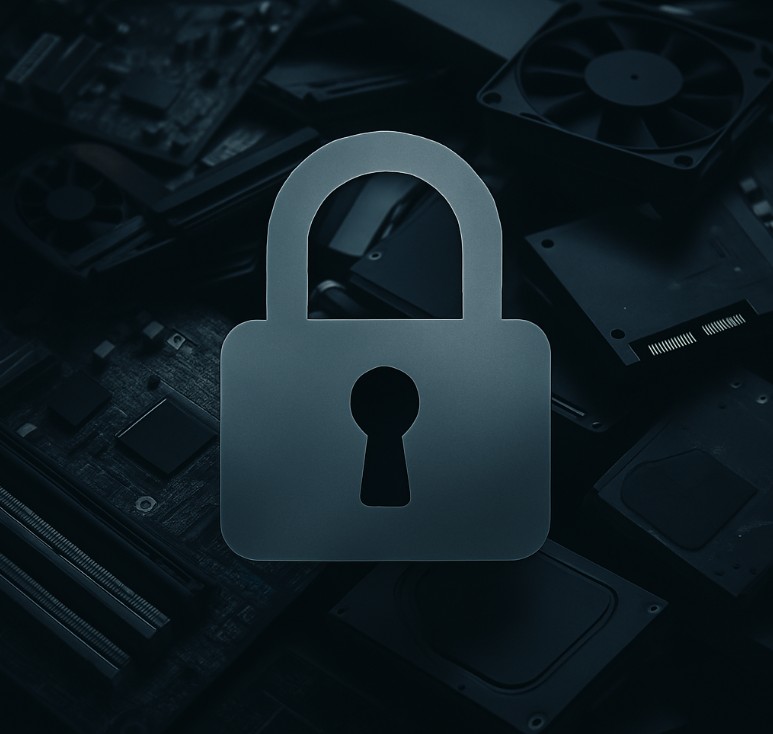Technological advancement continues to accelerate the cycle of device acquisition and obsolescence, driving a surge in electronic waste (e-waste). While often framed as an environmental issue, improper electronics disposal carries hidden compliance risks—leading to steep financial penalties, regulatory violations, data breaches, and reputational damage.
Disposing of electronics is no longer a matter of simply recycling outdated equipment. It requires a proactive, informed e-waste management approach, including the evolving network of regulations at the local, national, and international levels. Many organizations underestimate the scope and impact of these obligations, exposing themselves to avoidable risk.
This article explores the often-overlooked dangers. It also offers strategies for businesses to protect themselves and uphold legal and ethical responsibilities, ensuring operational resilience and stakeholder trust. With innovation rendering functional devices obsolete at a rapid pace, businesses must embrace a proactive and well-informed approach to electronics lifecycle management to remain compliant and resilient.
Understanding E-waste and Its Scope: A Growing Global Challenge
E-waste refers to discarded electrical or electronic devices (EEE), ranging from consumer electronics like mobile phones and computers to business hardware such as servers and medical diagnostic tools. These devices reach their end-of-life due to obsolescence, functional damage, or planned upgrades. The global technology proliferation has exponentially increased e-waste generation. According to The Global E-waste Monitor 2020, 53.6 million metric tonnes (Mt) of e-waste were generated in 2019, with projections reaching 74 Mt by 2030.
This surge is fueled by shorter product lifecycles, limited repairability, and escalating consumer demand for innovation. The volume of e-waste presents a significant management challenge, compounded by its complex material composition.
What makes e-waste particularly complex is its material composition. Many discarded devices contain recoverable metals—such a gold, silver, and copper—embedded alongside hazardous materials like lead, mercury, cadmium, and brominated flame retardants. When improperly handled, these hazardous substances can cause severe soil, water, and air pollution, impacting human health and ecosystems.
Understanding the scope and implications is foundational for businesses to appreciate compliance risks and develop responsible end-of-life management strategies. This includes recognizing the sheer scale of the problem and the specific dangers posed by the materials within discarded devices. Businesses must be aware that their discarded equipment contributes to a global issue with significant environmental and health ramifications if not handled correctly. Failing to address this with informed planning may result in compliance failures and reputational harm.
The Intricate Landscape of E-waste Regulations: A Global Compliance Web
E-waste disposal is governed by a complex framework of international, federal, and local regulations. Failure to comply can result in substantial fines, legal liability, reputational damage, and operational disruptions. These laws are primarily designed to address two core concerns: environmental protection and data security.
In the U.S., the Resource Conservation and Recovery Act (RCRA) governs hazardous waste management, including certain types of e-waste. Meanwhile, for devices storing sensitive information, regulations such as Europe’s General Data Protection Regulation (GDPR) and the U.S. Health Insurance Portability and Accountability Act (HIPAA) imposes strict data sanitization requirements for end-of-life equipment. Non-compliance can result in severe civil and criminal penalties.
Adding to the complexity, more than 25 U.S. states have enacted their own specific e-waste legislation, many of which include Extended Producer Responsibility (EPR) mandates or landfill bans for specific device types. This patchwork of state laws creates compliance challenges for businesses operating across multiple jurisdictions..
Internationally, the Basel Convention controls transboundary movements of hazardous e-wastes. Businesses must proactively understand and comply with all applicable regulations, often by partnering with certified e-waste recyclers providing auditable proof of compliant disposal. Violating these laws can trigger international sanctions, fines, and shipment rejections.
This regulatory web requires constant vigilance and a commitment to staying informed about changes and new requirements across all jurisdictions where a business operates or its e-waste may travel. The selection of a certified partner is not just a recommendation but a critical step in demonstrating due diligence and mitigating liability.
Compliance Risk #1: Data Breaches from Improper Device Disposal
One of the most critical, yet often underestimated, compliance risks associated with improper electronics disposal is the threat of catastrophic data security breaches. Modern devices, even after decommissioning, may still store vast sensitive information: confidential company data, intellectual property, financial records, customer Personally Identifiable Information (PII), and Protected Health Information (PHI).
Simply deleting or reformatting storage devices is not sufficient. Due to data remanence, information can often be recovered using freely available tools by malicious actors.
The consequences for mishandling this data are severe:
- Substantial fines under privacy regulations such as GDPR, CCPA/CPRA, and HIPAA
- Loss of customer trust
- Long-term reputational damage
Regulators now closely scrutinize how organizations manage data across its full lifecycle, including secure end-of-life destruction. As such, implementing robust data destruction policies is imperative.
Effective data destruction includes:
- Using certified sanitization methods in accordance with NIST SP 800-88 (Clear, Purge, Destroy techniques)
- Applying cryptographic erasure, degaussing, or physical destruction such as shredding
- Obtaining auditable certificates of data destruction from reputable ITAD vendors
Unaddressed data security in e-waste transforms discarded assets into significant liabilities. Every discarded device, from a server to a USB drive, must be considered a potential data breach vector until proven otherwise through verified sanitization or destruction. The cost of a breach far outweighs the cost of proper data destruction.
Compliance Risk #2: Environmental Violations from Improper Electronics Disposal
Improper electronics disposal significantly threatens environmental integrity. Electronics contain hazardous materials such as heavy metals (lead, mercury, cadmium), flame retardants, and toxic chemicals. When landfilled or incinerated without regulation, these substances contaminate soil, groundwater, and air, posing serious threats to ecosystems and human health.
To mitigate these risks, multiple environmental laws govern how e-waste must be handled. In the U.S.:
- The Environmental Protection Agency (EPA) regulates hazardous electronic components under the Resource Conservation and Recovery Act (RCRA) and Toxic Substances Control Act (TSCA).
- The Universal Waste Rule offers streamlined management for items like batteries, but still requires proper recycling.
- Many states enforce their own e-waste laws, often with Extended Producer Responsibility (EPR) requirements and landfill bans.
Internationally, the EU’s Waste Electrical and Electronic Equipment (WEEE) and Restriction of Hazardous Substance (RoHS) set influential precedents.
Non-compliance can result in:
- Regulatory fines
- Costly cleanup liabilities
- Criminal charges
- Severe reputational damage
Businesses must use certified recyclers adhering to environmentally sound practices, minimizing harm, maximizing resource recovery, and ensuring legal compliance. This commitment extends to ensuring that recycling partners do not engage in illegal exporting of hazardous e-waste to developing countries where environmental and worker safety standards may be lax. True environmental responsibility requires a cradle-to-grave approach, ensuring that all components are managed in an environmentally sound manner.
Compliance Risk #3: Financial and Reputational Fallout from Improper Disposal
Improper electronics disposal’s repercussions extend beyond legal penalties, inflicting severe financial and reputational damage. Financial costs are multifaceted:
- Direct costs: regulatory fines, legal fees, and penalties for noncompliance
- Breach-related costs: credit monitoring, public relations, and crisis management
- Operational disruptions: forensic investigations or cleanup efforts
Long-term financial impact can be worse. A tarnished reputation from a data breach or environmental scandal causes significant loss of customer trust and loyalty, leading to lost sales and difficulty attracting new clients. Reputational damage impacts investor confidence and employee morale. These cumulative blows can cripple a business.
Viewing compliant electronics disposal as a critical investment in risk management, brand protection, and long-term sustainability, not just a cost, is essential for business resilience. This proactive stance safeguards against financial shocks and bolsters corporate standing. The public and stakeholders are increasingly holding companies accountable for their environmental and data stewardship practices, making responsible e-waste management a key component of corporate social responsibility and brand integrity. The cost of inaction often far exceeds the investment in compliant practices.
Best Practices for Compliant Electronics Disposal: A Proactive Stance
Mitigating electronics disposal compliance risks requires a proactive, comprehensive approach. By following robust best practices, organizations can safeguard sensitive data, protect the environment, and uphold corporate responsibility.
- Establish a clear, documented IT Asset Disposition policy: Outline procedures for asset identification, data sanitization standards (NIST SP 800-88), approved disposal methods (prioritizing reuse, then responsible recycling), vendor due diligence, and responsibilities.
Employee training is essential. Ensure all relevant teams understand the ITAD policy, especially those involved in device lifecycle management, IT, security, and procurement.
- Prioritize secure, thorough data destruction: Use certified erasure software, degauss magnetic media, or physically destroy devices with sensitive data.
Also, obtain Certificates of Data Destruction for your records. These documents support compliance verification and protect your organization in case of audits or incidents.
- Partner with certified, reputable e-waste recyclers and ITAD vendors: Ensuring high standards and transparent tracking in your ITAD partners.
Also, maintain a detailed inventory of electronic assets and a chain of custody records.
- Regularly review and update ITAD policies and procedures: These practices reduce compliance risk and demonstrate responsible corporate citizenship. This includes conducting periodic internal audits of the ITAD program and vendor performance to ensure ongoing compliance and identify areas for improvement.
This promotes accountability and allows your organization to adjust to evolving regulations and emerging risks. Ultimately, a culture of security and environmental responsibility should be fostered throughout the organization.
How OEM Source Can Help Navigate E-waste Compliance
Navigating complex e-waste compliance can be overwhelming. That’s why partnering with an experienced specialist like OEM Source is invaluable. With deep regulatory understanding and commitment to best practices, OEM Source offers tailored services for responsible, secure end-of-life electronics management.
Our reverse logistics and repair services streamline the handling of returned or outdated equipment, maximizing value recovery. This reduces waste and can generate revenue. For end-of-life assets, we offer secure data deletion services adhering to stringent standards such as NIST SP 800-88. We ensure all data is permanently and irretrievably destroyed and provide Certificates of Data Destruction for your compliance records, helping you prevent data breaches and align with privacy regulations.
OEM Source is committed to environmentally sound practices through our reclaim and recycle services. We work with certified partners for minimal environmental impact, material recovery, and safe hazardous component disposal. Our re-marketing services offer businesses residual value from used IT assets while ensuring brand protection.
Choosing OEM Source means gaining a trusted partner for efficient, reliable, compliant solutions for the entire OEM technology product lifecycle, allowing businesses to focus on core operations with peace of mind. Our expertise allows us to tailor solutions to your specific industry and regulatory requirements, ensuring a customized and effective ITAD program. Let us help you reduce risk, reclaim value, and meet your compliance goals with confidence.
Frequently Asked Questions About Improper Electronics Disposal
What are the primary compliance risks businesses face from improper electronics disposal?
Businesses face multiple interconnected risks, including data security breaches (e.g., violations of GDPR, HIPAA, or CCPA), environmental non-compliance (such as breaches of the RCRA), and serious financial and reputational consequences. These risks can result in hefty fines, legal costs, lost customer trust, and long-term brand damage.
Importantly, these risks are not static and evolve with new technologies and regulations, requiring ongoing vigilance.
How can a business ensure data security when disposing of old electronics?
To ensure secure data disposal, businesses should implement robust data destruction that includes:
- Certified erasure software following NIST 800-88 standards
- Degaussing of magnetic media,
- Physical destruction (e.g., shredding, disintegration) of storage devices
It’s crucial to partner with reputable ITAD vendors who can provide auditable certificates of data destruction. Simple deletion is not sufficient. Employee training on data handling and disposal is also critical.
Why is choosing a certified e-waste recycler important for compliance?
Certified e-waste recyclers—such as those accredited under R2—follow audited, standards-based procedures that safeguard environmental compliance, data security, worker safety, and legal downstream material management.
They follow audited processes, maintain a transparent chain of custody, and help businesses meet due diligence obligations, avoid penalties, and demonstrate ethical e-waste management. Certification provides a level of assurance that uncertified vendors cannot match.
What types of penalties can a business face for non-compliant electronics disposal?
Potential penalties include:
- Substantial regulatory fines
- Legal and environmental remediation costs
- Credit monitoring and public disclosure following a data breach
- Reputational damage, leading to lost customers and investor confidence
In some cases, criminal charges against individuals are possible. The cumulative financial impact can be devastating, far exceeding the cost of compliant disposal programs.
What is the first step my business should take to improve its e-waste disposal practices?
Start by developing a formally documented IT Asset Disposition (ITAD) policy.
Define procedures for asset identification, data sanitization standards, approved disposal methods, vendor selection criteria, and assign responsibilities.
Ensure all employees are trained on the policy, and review it regularly. This policy is foundational for consistent e-waste management and should be updated to reflect changing risks and regulations.





